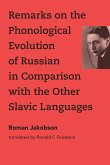Master's Thesis from the year 2017 in the subject Orientalism / Sinology - Japanology, grade: 1,0, University of Tubingen (Asien-Orient Institut (AOI), Abteilung Japanologie), language: English, abstract: The work present aims, by means of a comparative approach on the basis of the bilaterally contested narratives around the Himeyuri no T Memorial and Museum, to examine the predominant narratives about the HSC in Okinawa and Japan. After assessing the differences and possible overlapping areas of both narratives in consideration of the respective historical and socio-political contexts in which they developed, the next step will lead from description to analysis of current processes of politics of memory and identity. One particular interest is the question as to how the HSC narrative is utilized in Okinawan and mainland politics of memory and identity since 1945. Another question concerns the influence of Okinawa's politics of identity on Japan: How has the wartime past been depicted so far, and what are the bilateral claims to memory and its representation in the public sphere? Finally, to what extent is Okinawa able to influence the mainland's view of history, and what implications does this have for the possibility of and limits to both an Okinawan-Japanese identity, and a conceptual shift towards a broader understanding of "Japaneseness"?








